Blog
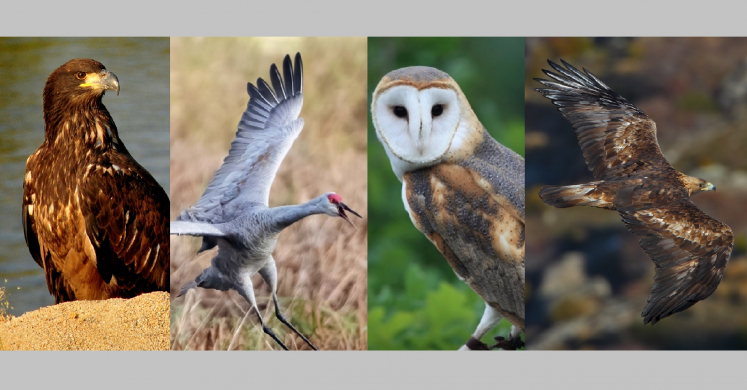
#bioPGH Blog: What Wildlife Might Be Hiding in a Modern Monster Lore?
 A resource of Biophilia: Pittsburgh, #bioPGH is a weekly blog and social media series that aims to encourage both children and adults to reconnect with nature and enjoy what each of our distinctive seasons has to offer.
A resource of Biophilia: Pittsburgh, #bioPGH is a weekly blog and social media series that aims to encourage both children and adults to reconnect with nature and enjoy what each of our distinctive seasons has to offer.
‘Tis the spooky season, is it not? So I think we need a spooky natural history mystery. Grab some hot cider, and let’s take a little trip back in time…
From November of 1966 until December of 1967, the town of Point Pleasant, West Virginia, was purportedly visited multiple times by a large, imposing creature with glowing red eyes and broad wings. Estimated to be over six feet tall and able to fly silently without so much as a wing beat, the Mothman, as it came to be called in local media, appeared randomly to various town residents throughout the following year. The first to spot the creature were Roger and Linda Scarberry and Steve and Mary Mallette, all riding in a car together one November night outside of town. They reported the creature chased behind their car, matching their increasingly panicked high speed, until they reached town and the creature veered back to the woods. The couples’ encounter made the local newspaper the next morning, and within days, other area residents were reporting seeing the same thing — a large winged creature capable of swift, flighted pursuit; rapid ascents; and possibly dog thievery. From that November until well into the following year, the sightings of the Mothman continued in varying frequency. That is…they continued until the tragic collapse of Point Pleasant’s Silver Bridge in December of 1967. The unthinkable accident killed 46 people, and local lore quickly connected the event to the “foreshadowing” appearances of the creature. Had the Mothman been a harbinger of the tragedy? Was he there to warn the town, or perhaps even cause the collapse? Documentation, investigation, and speculation all combined in the 1975 book The Mothman Prophecies, and the 2002 film of the same name; and the creature eventually morphed into something altogether greater than random roadside sightings. It became a cultural touchstone that turned the Mothman in a local icon and cemented Point Pleasant’s distinction in other-worldly phenomenon alongside Area 51 and Salem, Massachusetts. Even today, the town holds an annual festival dedicated to Mothman’s monster lore, a museum for Mothman truth seekers, and a prominently featured statue. It also served a fascinating reminder that modern folklore is ever-evolving and some mysteries will always draw us in.
But what was the creature? Though one could reasonably speculate that perhaps not all of the sightings were indeed a large, living being (a lil’ dash of mass hysteria goes a long way), it is also reasonable to assume that the Scarberrys and Mallettes all saw something chase their car that November night. It is also reasonable to assume that at least some of the later encounters were also the same…winged creature. So what could it have been? Hypotheses and educated guesses have certainly not been in short supply for the past five decades, and as this is a nature blog, we can look at a few possibilities from the wild world!
Barn Owl
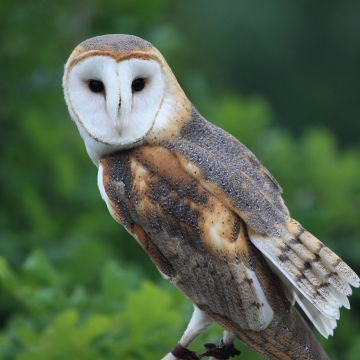
Photo: USFWS
With their haunting white face and assortment of vocalizations ranging from hisses to screams to beak snaps, barn owls can be a quick fright in the night for anyone who isn’t expecting them. Owls often end up on the Spooky List anyway due to nocturnal behavior, and barn owls in particular more closely resemble a ghostly apparition than other local species due to their lighter plumage. Barn owls would indeed be found in West Virginia (just like they are here in Western Pennsylvania) and could have easily been startling in the headlights of an oncoming car. The main arguments against a barn owl would be the wingspan of only four feet, rather than wings to accompany a 6-7 foot being, and onyx-black eyes rather red eyes. However, owls are virtually silent in flight thanks to serrated feather edges, which fits the description; and the glowing eyes could have been eyeshine from car headlights or taillights.
Sandhill Crane
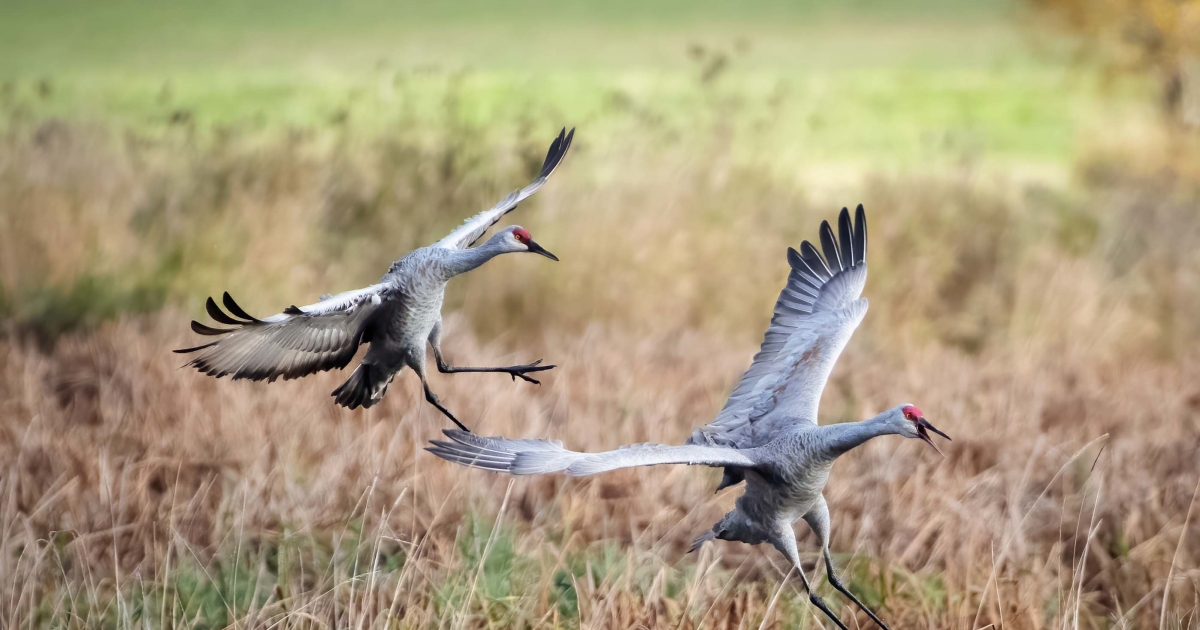
Photo: USFWS
Sandhill cranes were almost immediately cited as a possible “culprit” after the first sighting. Males can be close to five feet tall with a wingspan of over six feet, and the species even has a red “mask” of feathering on its face which could easily look like glowing red eyes in a pair of bright headlights. The argument against a sandhill crane is that West Virginia isn’t a part of their range; the species is generally found near or west of the Mississippi River in western North America. That technicality doesn’t particularly rule them out, though — for me, it actually strengthens the argument. Birds can accidentally stray from flocks or blow off their migratory course, and none of the Point Pleasant folks who reported seeing the Mothman would have been familiar with sandhill cranes—they would have been quite startling to come across in the dark!
Golden Eagle
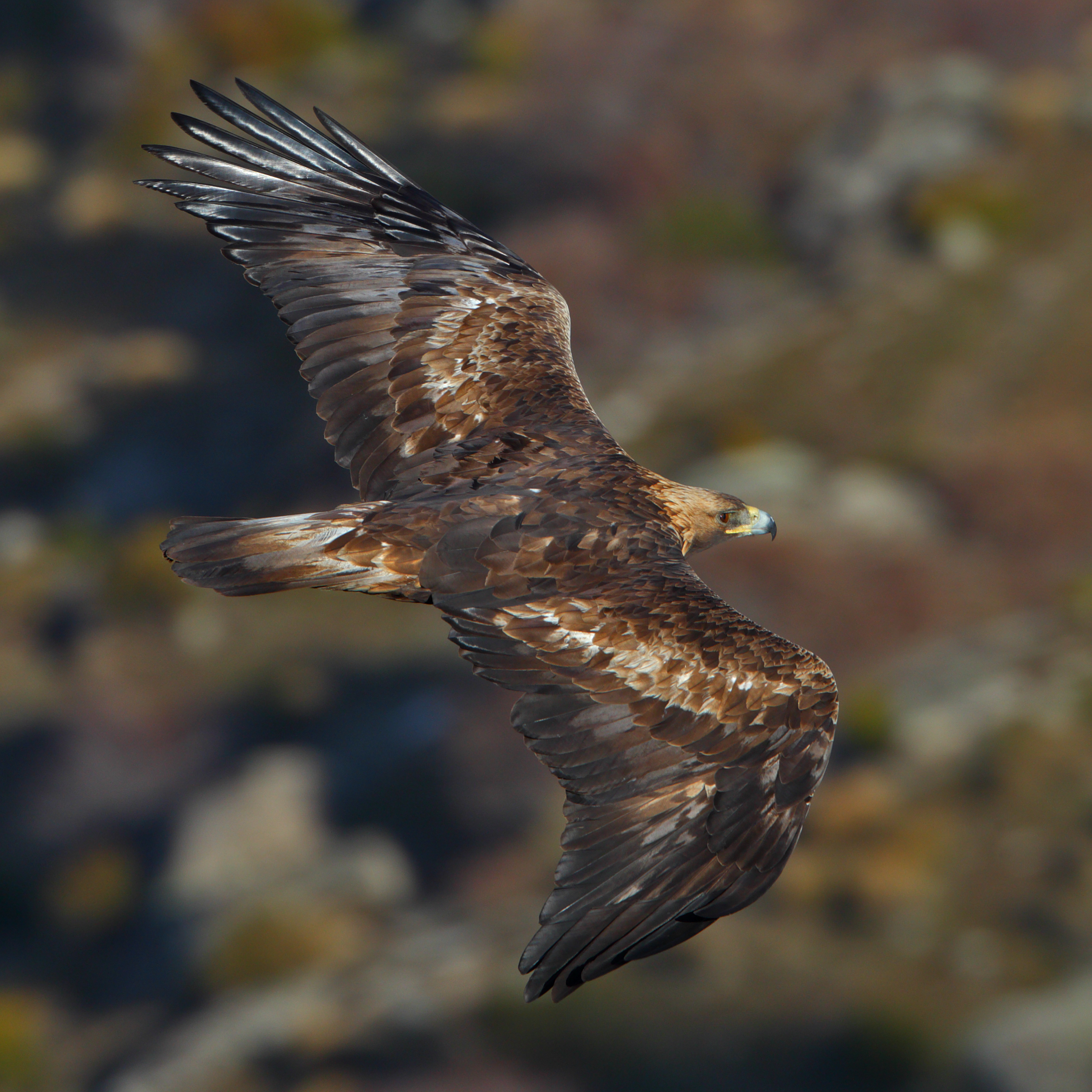
Photo: USFWS
Another possibility for the looming figure could have been the golden eagle. In eastern North America, golden eagles who nest in Canada travel down to the States to over-winter. Some goldens spend their winters in West Virginia; and notably, they do often stay in wooded areas, not unlike some of the Mothman sighting locations. Golden eagles have a wingspan of up to seven feet, which could certainly make them large and imposing in the dark, and they are also capable gliders, which may have fed the idea of silent flight. The eagles would have arrived in the state sometime in October or early November and then stayed until March or so – which generally coincides with the timing of the majority of the Mothman sightings.
Juvenile Bald Eagle
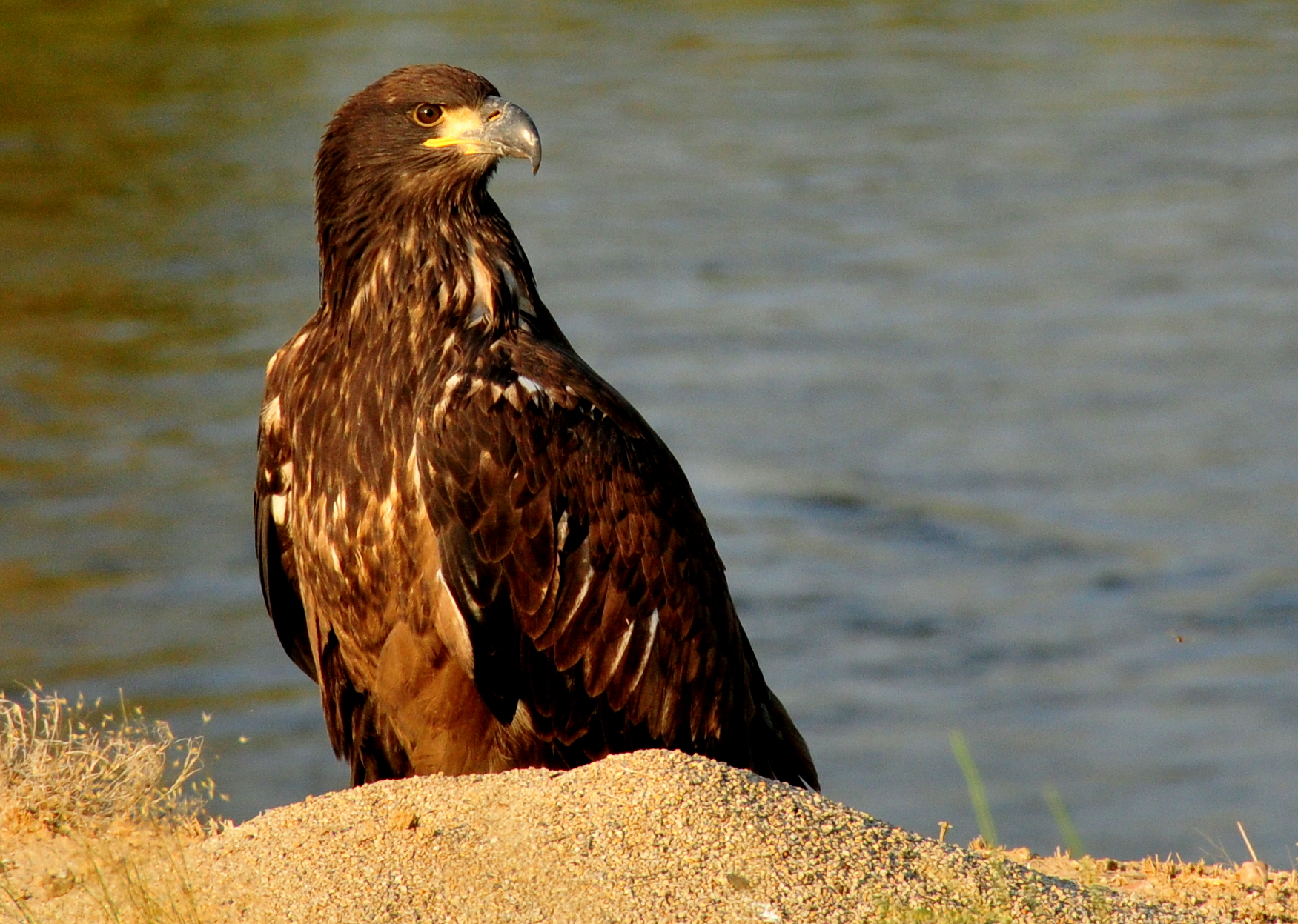
Photo: USFWS
This one is a bit more of stretch because bald eagles hit their lowest numbers in the continental US around this time (by 1967, there were only 487 nesting pairs in all of the Lower 48 states), and they weren’t common in West Virginia. Even so, an adult bald eagle with its bright, white head is probably too distinctive to misidentify, even at night. A juvenile bald eagle, though, is the size of adult – so roughly a six-seven foot wingspan — but has a dark and mottled body feathering until about five years of age. A bird that large could be quite startling, especially to folks who weren’t used to seeing eagles at all.
It's weirdly worth noting, though, that given the time of year, the couples in the car would have been more likely to see a juvenile bald eagle from Florida than West Virginia. Young bald eagles from southern states are able to fledge much earlier in the year than birds from more northern areas (the parents can begin nesting earlier because of the warmer weather), and young Florida birds have the unique quirk of flying north some winters. Ah to be young, carefree, and adventurous!
What was it…?
In the end, who can say for sure what the residents of Point Pleasant and the surrounding communities saw in 1966? Maybe it was an owl or an eagle. Maybe a weather balloon or a sandhill crane. Or maybe, just maybe…it was something else entirely…
Connecting to the Outdoors Tip: All this talk of folklore monsters may inspire a movie night, but do the possible birds behind the mystery make you want to learn more about the large creatures that we know live right among us? Check out the Hawk Migration Association of North America to learn more about how you can get started hawk watching either as a hobby or beyond!
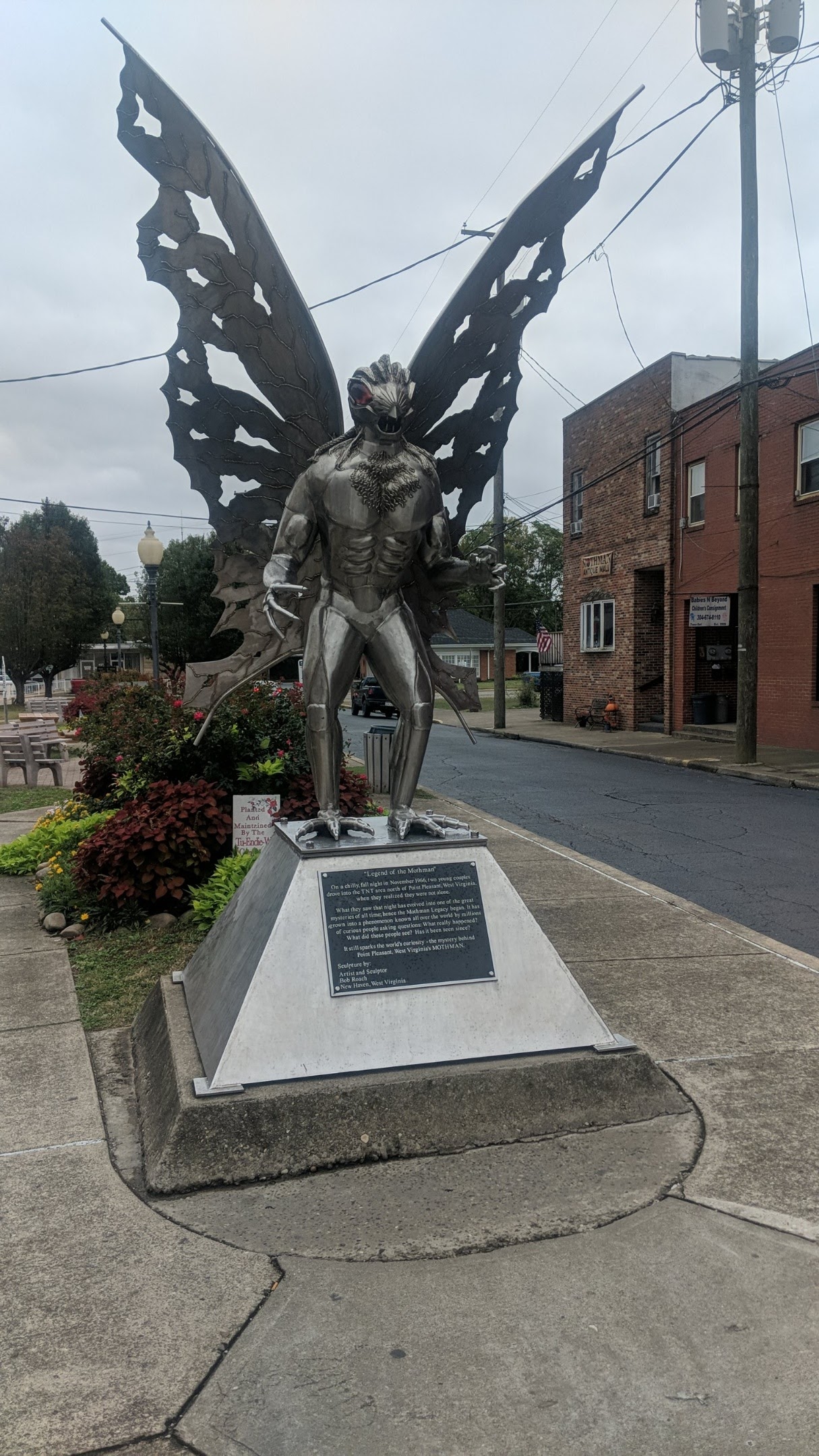
And maybe check out Point Pleasant someday! Photo, Elisha Wheeler
Resources
The Athens Messenger, “Mothman myth rooted in Messenger reporter's work”
Photos: Header, Maria Wheeler-Dubas; Mothman statue, Elisha Wheeler; all other photos public domain from US Fish and Wildlife Service

